WATER IN ROME
Ever since the earliest times, water has played an important role in the life of the city, a source of health and hygiene, but also part of the classical quest for beauty.
Water flowed constantly into ancient
Ever since the earliest times, water has played an important role in the life of the city, a source of health and hygiene, but also part of the classical quest for beauty.
Water flowed constantly into ancient
We continue the journey to discover the Roman names, with the vast repertoire of stories, myths, anecdotes and secrets that rest in those names. Much history of the city is also contained in the names of many churches. Piazza della Pace (a few steps from Piazza Navona), for example, is a small square, almost hidden, which owes its name to an important moment in the history of Italy. Around 1480, here was a church dedicated to St. Andrew, which had outside an image of Maria. During an evening outdoors, finished in brawl, a stone struck the face of Mary that began to bleed. Pope Sixtus IV went in procession to the place of wonder and interpreted it as a warning against wars that rend Italy after the Pazzi conspiracy in Florence. The pope wanted in the place was built a temple dedicated to Madonna della Pace, like a votic to invoke Mary to avoid another tear in the peninsula.
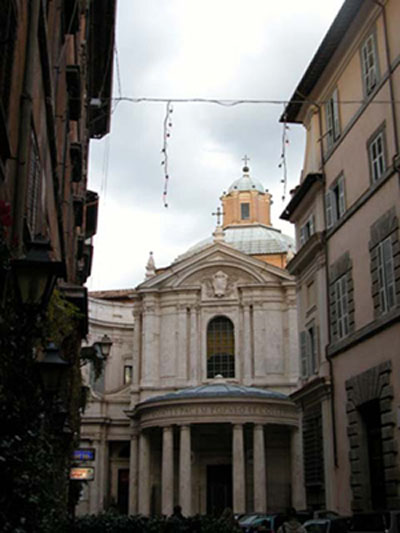
Another curious case is about Piazza della Quercia (behind Piazza Farnese), the origin of whose name is still doubtful. The most credited is that which tells of a church, entrusted in 1532 to the powerful corporation of butchers Romans. As it is tradition, workers belonging to the same category were for the most part from the same locality, in this case, from Viterbo and its countryside. The church, which was originally dedicated to San Nicolò di Capodiferro, became Santa Maria della Quercia also to honor the Virgin in Rome in the omonyme venerated shrine of Viterbo, where is holded the miraculous image painted on a fragment of tile, found near a oak.
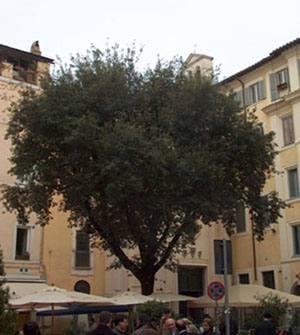
When someone speaks of Rome, usually thinks about the main attractions of the Eternal City, of several monuments reminding centuries of history, of all museums that satisfied the curiosity of tourists from a lot parts of the world, telling also stories of famous people and not only …
However, not all of them, find that in every corner of the city, there are hundreds or perhaps thousands of lucky witnesses, the most common of everyday life: the cats of Rome!
Beautiful cats of every breed and size, multicolored or with a single color, of a neighborhood or of a private person.
Small and sweet animals, camouflaged among the cars in the parking areas, between the loops of all places, on benches in parks or in the middle of traffic, and which often give color and grace of the infinite beauty of the capital.
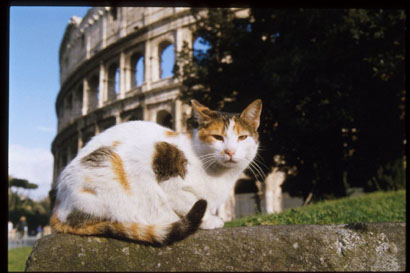
They are so involved in the capital life, that now in all stores where tourists usually go, it is impossible that miss the classic card with a cat at the foot of a historical statue or, tired in the warmer months, it quenches the Trevi Fountain or Fontana Barcaccia (wonderful work of Bernini) located at Piazza di Spagna.
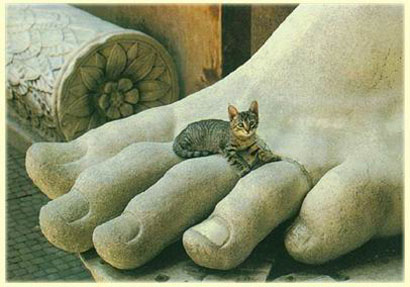
The protagonist of the Roman landscape, the feline population is increasing, so that we reach even more than 300 colonies with different locations.
There are also the so-called “gattare”, the old women that deal with these animals, cuddle them and spend a lot of time as well as give them something to eat and often take care of their health and cleanliness.
However has to be noted that not always they are old people. Lately I have more and more frequently to seen children and families who care even though it is often difficult to take pets inside their homes.
Often there are even entire blocks that “adopt” as a mascot these beautiful animals.
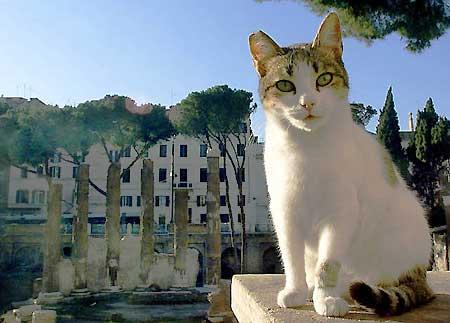
We hope this habit takes more and more foot in the city life, do not have pets at home to care for and love them equally.
That Rome has a wealth of history is more than obvious, not only because it is a city with three thousand years on his shoulders! But perhaps what escapes to tourists who visit it every day is “another story” of the capital, the humble, one that only an observant eye can see, one made of taverns, markets, traditions, in other words one contained in toponymy capitolina. Our trip to find a place names curiosity starts from a square in the heart of the city that houses a typical small market. Piazza delle Coppelle: a handkerchief of space occupied by a few crowded benches, skins under the feet, strong odors. The name of the square stems by the profession mainly exercised in the area: here were established the “cuppellari” manufacturers of “cuppelle” small barrels which were used for the transportation of wine.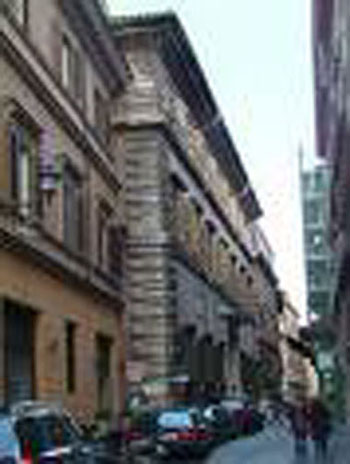
So, Rome grateful to the category named a church, Santa Maria in the Chapel, where “Chapel” recalls the ancient name of “cuppella”.Under another sign and very curious, the origin of the name of the street dell’Arco Ciambella. It seems that stems from a discovery made in the sixteenth century, which then became a sensation during the excavations of the Baths of Agrippa to the Pantheon, wanted by the Cardinal della Valle, was found a golden imperial crown surrounding the archway. The crown appeared similar to some donuts eaten in Rome. The landlord of an inn nearby, rode the wave of enthusiasm for the discovery and named the local “all’Arco della Ciambella.” Nowadays, the name is the only survivor: the house has disappeared and the remains of the baths were demolished.
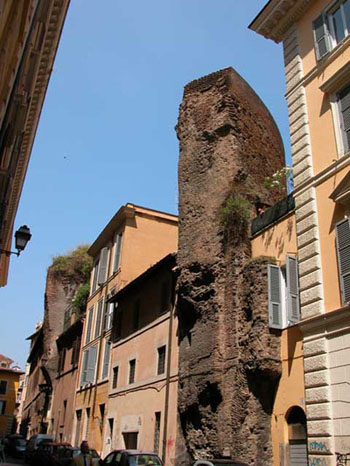
Not evryone knows that beyond the historical, cultural and artistic attractions offered by the Eternal City, there are also a lot of beautiful areas (within easy reach and in a short time!) that allow you to discover other views of the capital soul.
Among these, the charming town of Tivoli (about 500 years older than Rome), at around thirty kms from Rome. With its 60 thousand inhabitants, the historic streets and beautiful Villas, gives wonderful emotions and a charming view of the capital thanks to its location on Tiburtini Mountains, from where it is possible to see (if the weather allows) St. Pietro’s dome, and not only …Particularly interesting is the visit of Villa D’Este, the famous Renaissance villa built since the 1550 by Pirro Ligorio (architec from Naples), commissioned by Cardinal Ippolito II D’Este.
In addition to the interior of the building (3 floors of rooms decorated with great care) the property offers 35 000 square meters of gardens, adorned by beautiful fountains and waterfalls, fed by the waters of the river Aniene, thanks to special hydraulic pipes.
Among the wonderful water features the most interesting coul be the “Fontana dell’Organo”. Here, the water falls, move the air within some reeds, while another device presses on the keys creating magnificient melodies.
Every 2-3 hours this charming structure is activated. I absolutely advise it!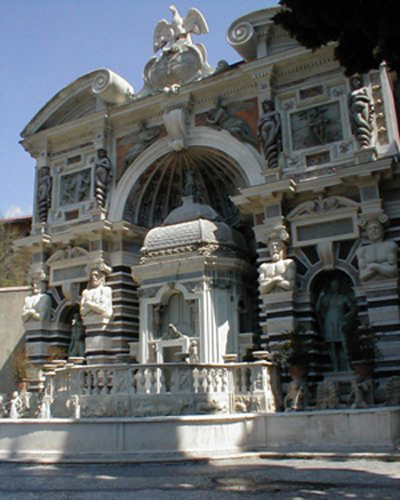 Equally fascinating is the lane of the 100 fountains, spread over 3 levels (representing the rivers Aniene, Albuneo and Ercolaneo) and various shapes, including those of the symbol of the Este family (lilies and eagles).
Equally fascinating is the lane of the 100 fountains, spread over 3 levels (representing the rivers Aniene, Albuneo and Ercolaneo) and various shapes, including those of the symbol of the Este family (lilies and eagles).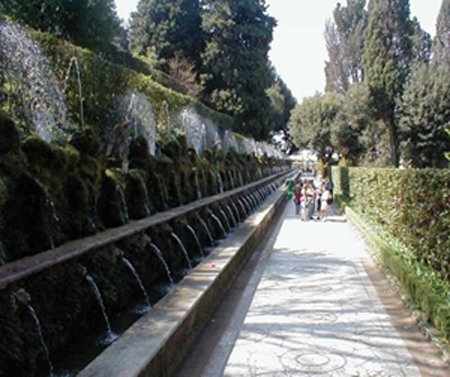 The list of wonders could go a long …
The list of wonders could go a long …
Living very close, I made several visits there with friends and family from far away and it is possible to discover every time new amazing thing.
During the summer I advise a visit during the night. The play of light and water gives a magical vein to these enchanting gardens …. besides being very cheap!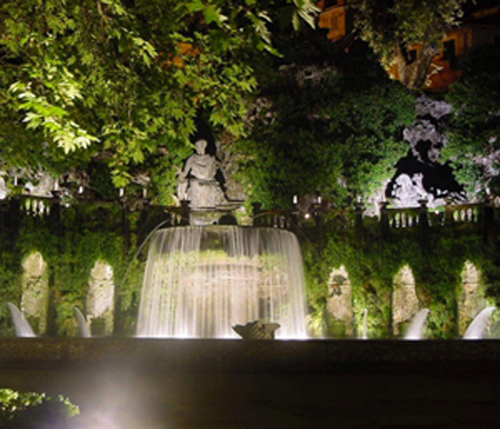
How to get to Tivoli from Rome?
From Tiburtina Station (metro line B/blue) a train takes about 30/60 mins (depending on the train stops).
Otherwise, at Ponte Mammolo Station (metro line B/blue) a lot of buses go to Tivoli.
Recommend those that take the A24 freeway as you save the traffic on Via Tiburtina!
Once arrived in Tivoli, there are wherever directions to the Villa. If you do not see them, just ask!
Who usually thinks of the Eternal City as a chaotic metropolis, full of traffic, frenetic people, ecc, could be surprised to know that in the very heart of it (in the Aventine area, there is the Giardino degli Aranci and Roses Garden. Designed by the architect Raffaele de Vico, the Giardino degli Aranci is a park of about 7800 square meters, whose name comes from characteristic plants of bitter oranges, a wide alley where you have a entire view of Rome, among the suggestive frame of the place.
Some architects, most the Savelli family, decided to make the place even more special by placing near a construction through which its door’ eyelet, you can see the woderful Basilica di San Pietro, surrounded in a long avenue of orange trees.
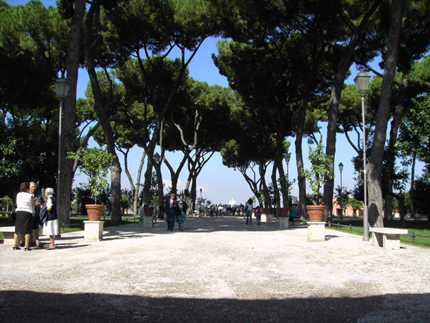
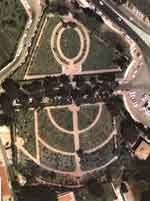
Not far away is the beautiful Roses Garden, with its 1100 different species of roses. For all lovers of nature, this unique location allows to enjoy many different types of plants all at once!
The Roses Garden, established in 1931, was destroyed during the Second World War, so in 1950, thanks to some institutions, the garden was rebuilt but this time with a strange shape: the paths which divide the field of the flower beds of exotic plants draw a candelabrum with seven branches. Still sure: Rome = metropolis, well … Welcome to the Paradise!
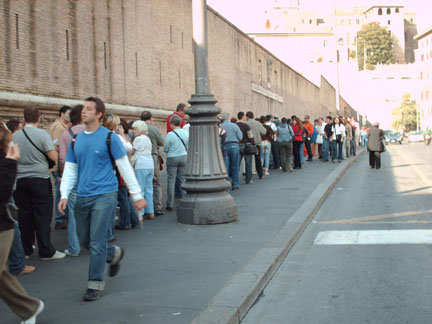
As many know, to enter at the Vatican museums, there are long lines of several hours … Only accreditaed guided tours have a fast access without lines.
Usually the price of for a tour in Vatican museums is 35 euro per person, but we found who offer you a fast entrance for only 23.50 … Entering with an accompanying list …. That at some point … Just leave you in the Vatican museums!
Of course, the practice is somewhat strange … But this is what we propose to http://www.rome-museum.com
Judging from the stories on tripadvisor seems that things go as they say.